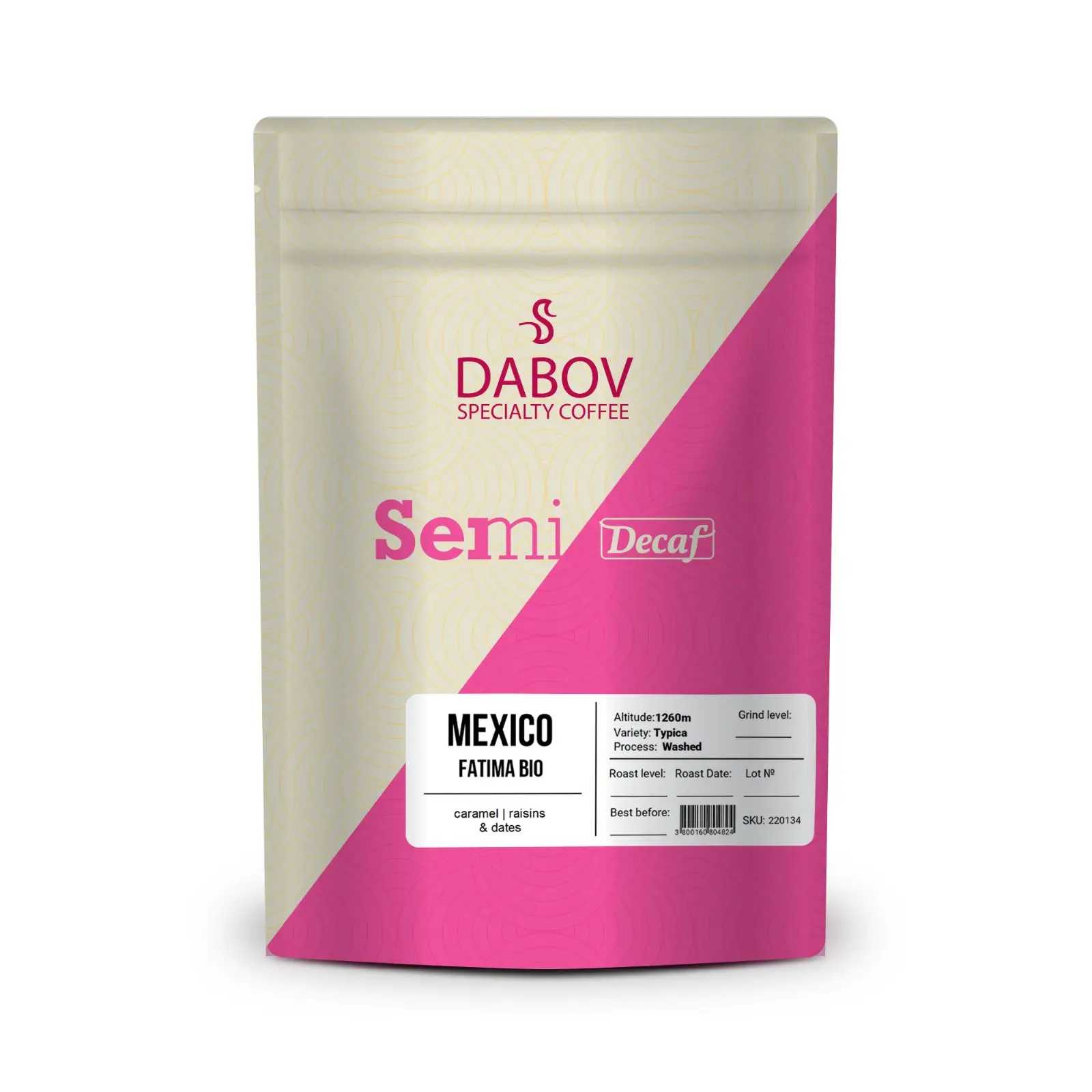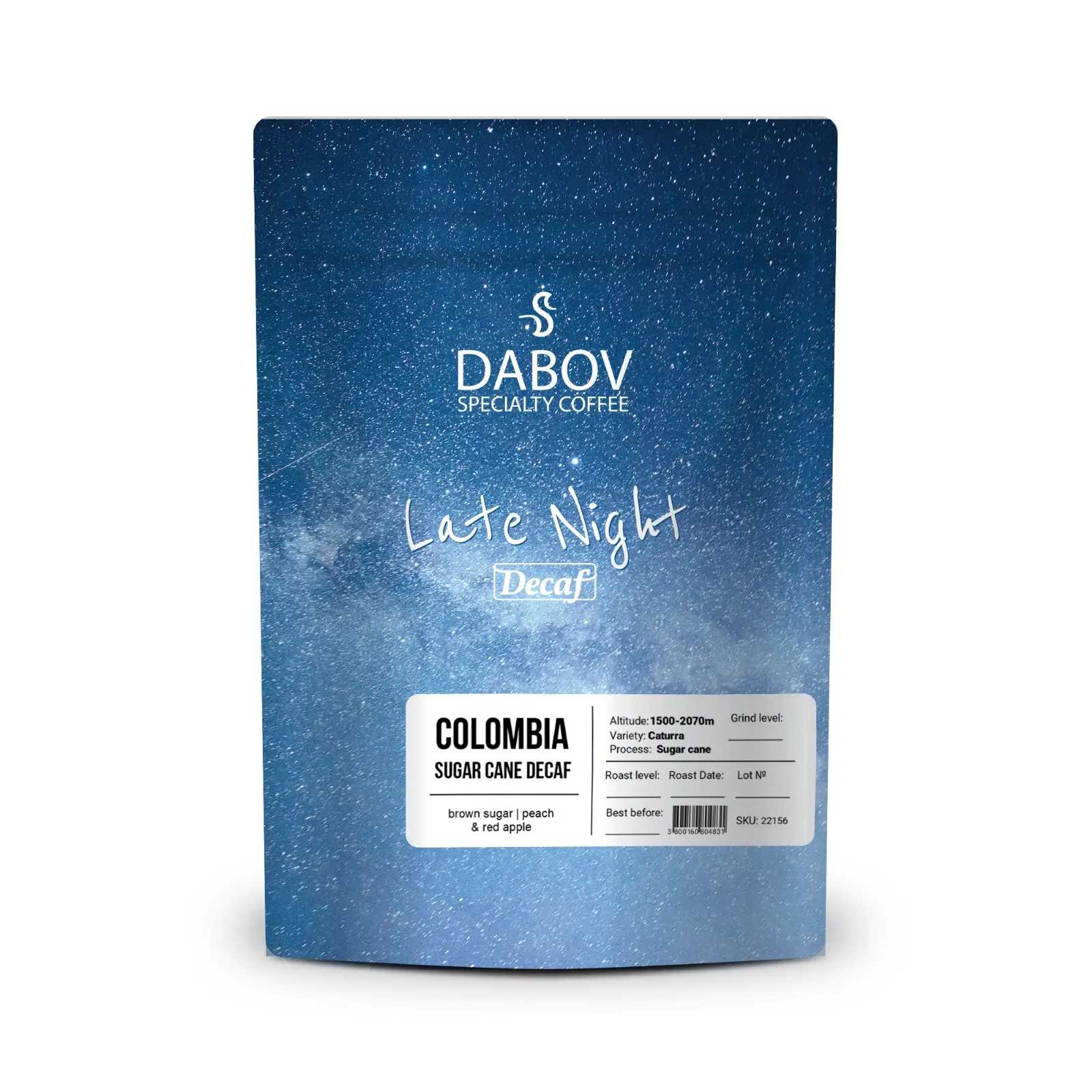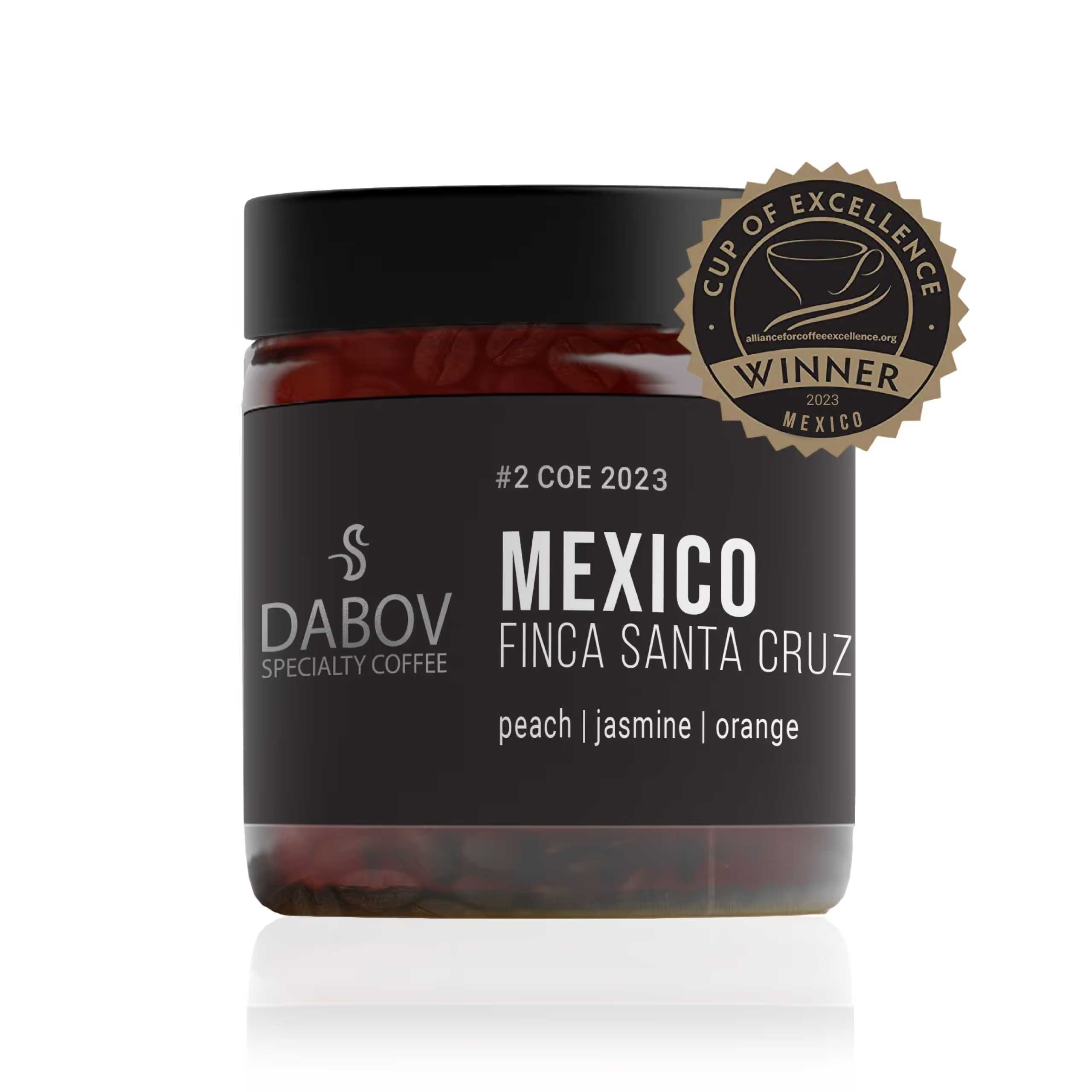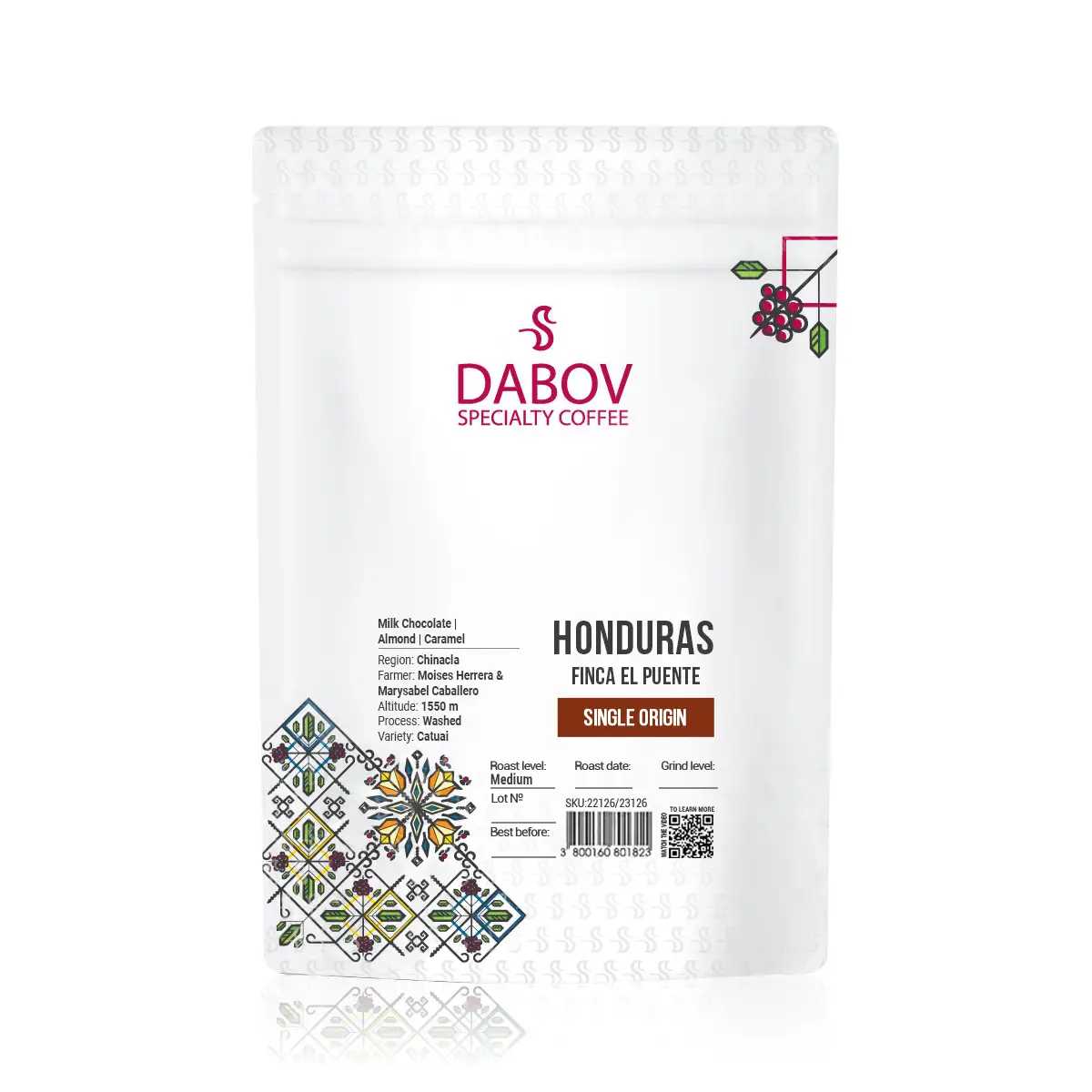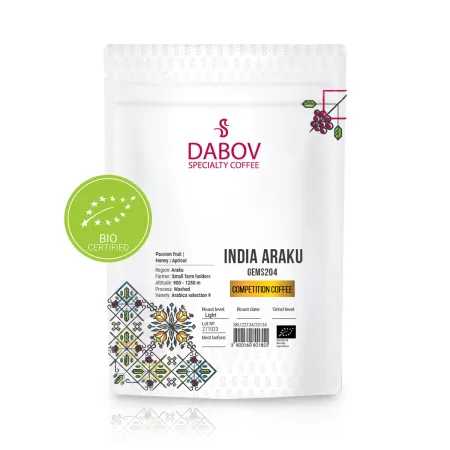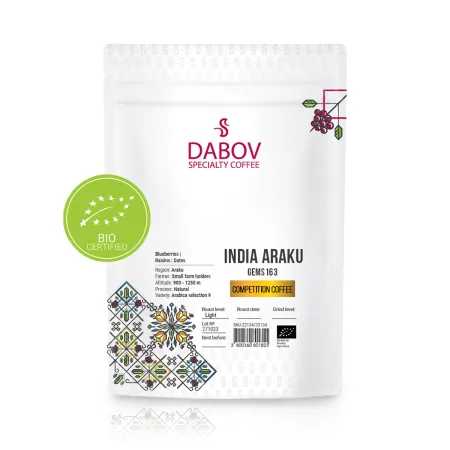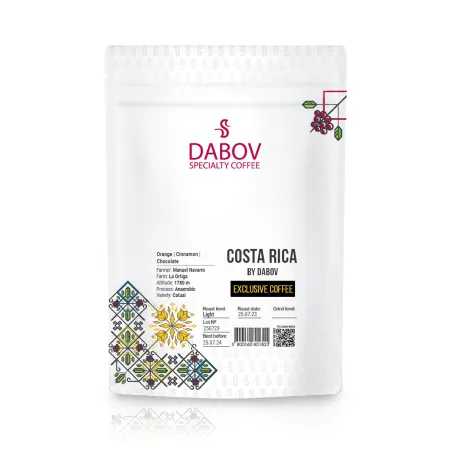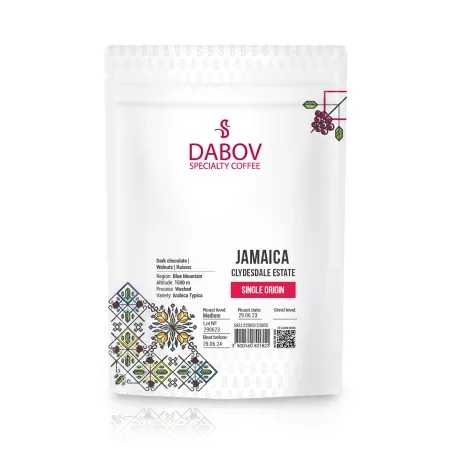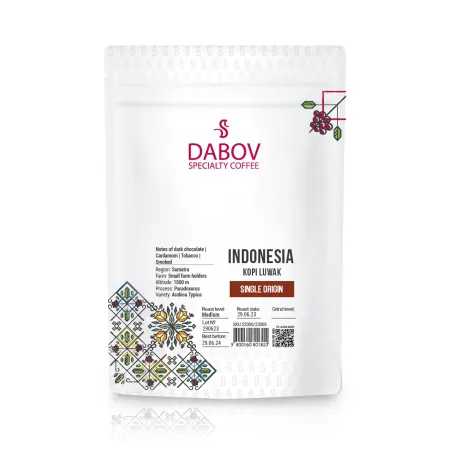How to Choose the Right Grind Size for Your Coffee Maker
Choosing the right coffee grind size can be the difference between a good cup of coffee and a great one. The grind size directly influences flavor extraction, which can drastically alter your coffee experience. In this guide, we delve into everything you need to know about coffee grind size, including why it matters, the different types of grinders available, and how to choose the right grind for your coffee maker. Whether you're using an espresso machine, drip coffee maker, or a French press, understanding grind size will help you brew the perfect cup. We'll also share tips on how to store your ground coffee and the importance of consistency in grinding. Ready to elevate your coffee game? Let’s get started!
Coffee enthusiasts and casual drinkers alike know that the perfect cup of coffee is an art form, requiring attention to detail and a deep understanding of the brewing process. Among the many factors that contribute to a delicious brew, one often overlooked aspect is the grind size of your coffee beans. This crucial element can make or break your coffee experience, influencing everything from flavor extraction to brewing time. In this comprehensive guide, we'll delve into the intricacies of coffee grind size, exploring its importance, how to achieve the perfect grind for various brewing methods, and expert tips to elevate your coffee game.
Introduction
The world of coffee is vast and complex, with countless variables affecting the final product in your cup. Among these, coffee grind size stands out as a critical factor that can dramatically alter the taste, aroma, and overall quality of your brew. Simply put, coffee grind size refers to the fineness or coarseness of your ground coffee beans. This seemingly simple aspect of coffee preparation plays a pivotal role in the extraction process, determining how quickly and effectively water can absorb the flavors and oils from your coffee grounds.
The importance of grind size cannot be overstated. It's the key to unlocking the full potential of your coffee beans, ensuring that you extract the perfect balance of flavors without over-extracting (leading to bitterness) or under-extracting (resulting in weak, sour coffee). As we embark on this journey through the world of coffee grinds, prepare to discover how this often-overlooked element can transform your daily coffee ritual from ordinary to extraordinary.
Section 1: Understanding Coffee Grind Size
1.1 What is Coffee Grind Size?
Coffee grind size is more than just a matter of aesthetics; it's a fundamental aspect of coffee preparation that directly impacts the brewing process. When we talk about grind size, we're referring to the dimensions of the individual coffee particles after the beans have been ground. These particles can range from fine powder-like consistency to coarse, chunky pieces, with numerous gradations in between.
The concept of grind size is intrinsically linked to the surface area of the coffee particles. Finer grinds have a larger total surface area exposed to water during brewing, which affects the rate of extraction. This relationship between grind size and extraction is at the heart of why different brewing methods require specific grind sizes.
For instance, espresso machines typically demand a very fine grind because the brewing process is rapid and uses pressure to force water through the coffee. The fine grind provides ample surface area for quick extraction, allowing the water to efficiently extract the flavors in the short time it's in contact with the coffee. On the other hand, a French press requires a much coarser grind because the coffee steeps in water for several minutes. A coarse grind prevents over-extraction and reduces the amount of sediment in the final cup.
Understanding grind size also involves recognizing its variability across different coffee makers and brewing methods. Each method of brewing coffee interacts with the grounds in unique ways, necessitating specific grind sizes to achieve optimal results. This variability is why you'll often see coffee pre-ground for specific brewing methods, such as "espresso grind" or "French press grind."
Moreover, the concept of grind size extends beyond just the average size of the particles. Consistency in grind size is equally important. Uniform particle size ensures even extraction across all the coffee grounds, leading to a balanced and flavorful cup. Inconsistent grinds can result in some particles being over-extracted (leading to bitterness) while others are under-extracted (contributing to sourness or weakness), ultimately producing an unbalanced and less enjoyable coffee.
1.2 Importance of Choosing the Right Grind
Selecting the appropriate grind size is not merely a suggestion for coffee enthusiasts; it's a crucial step in the brewing process that can significantly impact the quality of your coffee. The right grind size acts as a gatekeeper, controlling how quickly and effectively water can extract the desirable compounds from your coffee beans. This control over extraction is what ultimately determines the flavor, aroma, and overall character of your brew.
When you choose the correct grind size for your brewing method, you're setting the stage for optimal extraction. This means allowing water to interact with the coffee particles in a way that draws out the best flavors and aromas without overexposing the grounds to water, which can lead to bitter, over-extracted coffee. Conversely, using a grind that's too coarse for your brewing method can result in under-extraction, where water passes through the coffee too quickly, leading to weak, sour, or lacking in depth and complexity.
The impact of grind size on brewing time is particularly noteworthy. Finer grinds slow down the flow of water, increasing the contact time between water and coffee. This is why espresso, which has a very short brewing time, requires an extremely fine grind. The fine particles create resistance, allowing the pressurized water to extract flavors efficiently in just 20-30 seconds. In contrast, a French press uses a coarse grind because the coffee steeps in water for several minutes. The coarse grind prevents over-extraction during this extended contact time.
Extraction efficiency is another critical factor influenced by grind size. The goal is to extract approximately 18-22% of the coffee's soluble compounds for a balanced cup. Too fine a grind can lead to over-extraction, pulling out undesirable bitter compounds. Too coarse a grind results in under-extraction, where you miss out on the full range of flavors your coffee has to offer.
The overall taste of your coffee is the ultimate testament to the importance of grind size. A properly chosen grind size allows for the extraction of a harmonious blend of flavors, from bright, fruity notes to rich, chocolatey undertones. It ensures a balanced acidity, appropriate body, and a pleasant aftertaste. When the grind size is off, you might experience unpleasant extremes – coffee that's too bitter, too sour, or simply lacking in flavor complexity.
Understanding and implementing the right grind size is not just about avoiding bad coffee; it's about unlocking the full potential of your beans. It's the difference between a mediocre cup and one that truly showcases the unique characteristics of your chosen coffee, whether it's a single-origin Ethiopian Yirgacheffe or a carefully crafted espresso blend.
Section 2: The Coffee Grinding Process
2.1 Types of Coffee Grinders
When it comes to achieving the perfect grind size for your coffee, the type of grinder you use plays a crucial role. There are two main categories of coffee grinders: blade grinders and burr grinders. Each type has its own set of characteristics that affect the consistency and quality of the coffee grind.
Blade grinders, often the more affordable option, operate on a simple principle. They use a spinning blade, similar to a propeller, to chop the coffee beans into smaller pieces. While blade grinders are cost-effective and compact, they have several drawbacks when it comes to producing consistent grinds. The spinning action tends to create coffee particles of varying sizes, from fine powder to larger chunks. This inconsistency can lead to uneven extraction during brewing, as smaller particles may over-extract while larger ones under-extract, resulting in a less balanced cup of coffee.
Moreover, blade grinders generate heat through friction, which can potentially alter the flavor of the coffee oils before brewing even begins. The lack of precise control over grind size with blade grinders makes it challenging to achieve the specific grinds required for different brewing methods. Despite these limitations, blade grinders can be a suitable entry point for those new to grinding their own coffee or for those who primarily use brewing methods that are more forgiving of inconsistent grinds, such as drip coffee makers.
On the other hand, burr grinders are widely considered superior for producing consistent, high-quality coffee grinds. These grinders use two abrasive surfaces (burrs) that rotate against each other to crush the coffee beans into uniform particles. Burr grinders come in two main types: flat burr and conical burr. Flat burr grinders use two parallel rings with sharp edges to grind the coffee, while conical burr grinders employ a cone-shaped burr that fits inside a ring-shaped burr.
The key advantage of burr grinders is their ability to produce uniform coffee particles, which is essential for even extraction and optimal flavor. They offer precise control over grind size, allowing you to make minute adjustments to suit different brewing methods or personal preferences. This level of control is particularly crucial for methods like espresso, where even slight variations in grind size can significantly impact the extraction and resulting flavor.
Burr grinders also generate less heat during the grinding process compared to blade grinders, helping to preserve the coffee's aromatic oils and flavors. While generally more expensive than blade grinders, burr grinders are considered an investment in coffee quality. They're particularly recommended for coffee enthusiasts who appreciate the nuances in flavor and are looking to explore different brewing methods.
When choosing between flat and conical burr grinders, it's worth noting that conical burrs are often preferred for their ability to grind at lower speeds, further reducing heat generation. They're also typically quieter and less prone to clogging. Flat burrs, however, are known for producing extremely consistent particle sizes, which can be beneficial for achieving a perfectly extracted espresso.
2.2 Grinding Techniques
Mastering various grinding techniques is essential for achieving the ideal coffee grind size consistently. Whether you're using a sophisticated burr grinder or a simple blade grinder, understanding and implementing proper grinding techniques can significantly enhance the quality and consistency of your coffee grounds.
For those using burr grinders, the key to achieving a consistent grind lies in proper calibration and usage. Start by ensuring your grinder is clean and free from old coffee residues, which can affect the flavor of your fresh grind. When adjusting the grind size, it's crucial to make changes while the grinder is running or empty. This prevents undue stress on the motor and ensures a more accurate adjustment. Begin with a coarser setting and gradually move finer, making small adjustments and testing the results with your preferred brewing method. This approach helps you find the sweet spot for your specific coffee and brewing style.
When using a burr grinder, it's also important to pay attention to the dosing process. Overloading the grinder can lead to inconsistent results, as the burrs may struggle to process a large volume of beans efficiently. Instead, grind in smaller batches, especially when preparing for methods like espresso that require precise grinds. This not only ensures consistency but also helps maintain the freshness of your coffee, as you're only grinding what you need for immediate use.
For those using blade grinders, achieving consistency can be more challenging, but not impossible. One effective technique is the "pulse and shake" method. Instead of running the grinder continuously, pulse it in short bursts of about 3-5 seconds. Between each pulse, give the grinder a shake to redistribute the grounds. This helps ensure that all beans come into contact with the blade, promoting a more even grind. The number of pulses will depend on your desired grind size – fewer for coarse grinds, more for finer grinds.
Another technique for blade grinder users is to sift the grounds after grinding. Using a fine mesh strainer, you can separate the finer particles from the coarser ones. This allows you to regrind the larger pieces, ultimately achieving a more uniform grind size. While time-consuming, this method can significantly improve the consistency of your grind when using a blade grinder.
Regardless of the type of grinder you're using, timing is crucial. Coffee begins to lose its aromatic compounds and flavors shortly after grinding. To preserve these delicate flavors, it's best to grind your coffee immediately before brewing. This practice ensures that you're capturing the full potential of your coffee beans in every cup.
For those looking to achieve ultra-fine grinds, such as for Turkish coffee, specialized techniques may be necessary. Traditional methods involve using a manual grinder specifically designed for Turkish coffee, which can produce an extremely fine, powder-like consistency. Some electric grinders are also capable of achieving this fine grind, but it's important to check the specifications of your grinder to ensure it can handle such fine settings without damaging the mechanism.
Experimenting with different grinding techniques and observing the results in your brewed coffee is the best way to refine your skills. Pay attention to how changes in your grinding technique affect the flavor, aroma, and overall quality of your coffee. Over time, you'll develop an intuitive understanding of how to adjust your grinding process to achieve the perfect cup for your taste preferences.
Section 3: Grind Size Guide for Different Coffee Makers
3.1 Espresso Machines
Espresso machines require perhaps the most precise and fine grind of all coffee brewing methods. The ideal grind for espresso is often described as powdery or flour-like, but achieving this perfect consistency is both an art and a science. The extreme fineness of the grind is crucial for several reasons, all of which contribute to the unique characteristics of a well-pulled espresso shot.
Firstly, the fine grind is necessary to create the right level of resistance to the pressurized water used in espresso machines. Typically, espresso is brewed under 9 bars of pressure, and the fine grind helps to create a "puck" of coffee that can withstand this pressure while allowing for proper extraction. If the grind is too coarse, the water will flow through too quickly, resulting in under-extraction and a weak, sour espresso. Conversely, if the grind is too fine, it can lead to over-extraction, producing a bitter and unpalatable shot.
The fine grind also maximizes the surface area of the coffee particles exposed to water. This increased surface area is crucial for the rapid extraction process in espresso brewing, which typically lasts only 20-30 seconds. During this brief contact time, the pressurized water needs to extract a balanced profile of flavors, oils, and compounds from the coffee to create the complex and intense flavor profile characteristic of espresso.
Another reason for the fine grind in espresso preparation is the creation of crema – the golden-brown foam that sits atop a well-pulled espresso shot. The fine grind, combined with the pressure of the espresso machine, helps to emulsify the oils in the coffee, creating this distinctive layer that contributes to both the flavor and the visual appeal of espresso.
Achieving the perfect espresso grind often requires a high-quality burr grinder capable of producing consistent, fine grounds. It's also a process that demands constant adjustment and fine-tuning. Factors such as humidity, temperature, and even the age of the coffee beans can affect the ideal grind size. Experienced baristas often need to make slight adjustments to their grind throughout the day to maintain consistency in their espresso shots.
It's worth noting that the exact fineness of the grind can vary slightly depending on the specific espresso machine, the coffee beans being used, and even personal preference. Some machines or beans may perform better with a slightly coarser or finer grind within the espresso range. This is where the art of espresso making comes into play, requiring experimentation and a keen palate to achieve the perfect balance.
For those new to espresso making, a good starting point is to grind the coffee fine enough that it clumps slightly when pressed together, but not so fine that it becomes a solid mass. From there, adjustments can be made based on the extraction time and taste of the resulting espresso. The goal is to achieve a shot that extracts in about 25-30 seconds, producing a rich, balanced flavor with a good crema.
3.2 Drip Coffee Makers
Drip coffee makers, a staple in many households and offices, typically require a medium grind size. This medium grind is crucial for achieving the right balance between extraction and brew time, resulting in a well-rounded and flavorful cup of coffee. Understanding the reasons behind this grind size preference can help you optimize your drip coffee experience.
The medium grind size for drip coffee makers is designed to work in harmony with the brewing process of these machines. In a typical drip coffee maker, hot water is sprayed or dripped over the coffee grounds, which are held in a filter. The water then passes through the grounds and filter, extracting flavors and oils along the way, before collecting in the carafe below. This process usually takes about 5-6 minutes for a full pot.
The medium grind is ideal for this brewing method because it provides enough resistance to the water flow to ensure proper extraction without causing over-extraction or clogging. If the grind is too fine, it can lead to over-extraction, resulting in bitter coffee. Additionally, a fine grind can clog the filter, causing the water to overflow or leading to an uneven extraction. On the other hand, if the grind is too coarse, the water will pass through too quickly, leading to under-extraction and weak, flavorless coffee.
The surface area of the coffee grounds also plays a crucial role in this brewing method. Medium-ground coffee provides an optimal surface area for extraction during the relatively short brewing time of a drip coffee maker. This allows for the extraction of a wide range of flavors and aromatic compounds, resulting in a well-balanced cup of coffee with good body and complexity.
When aiming for the perfect medium grind for your drip coffee maker, look for a consistency similar to that of coarse sand. The particles should be visible to the naked eye but not as large as those used for French press brewing. If you're using a grinder with numbered settings, the middle range (around 5-7 on a 10-point scale) is typically a good starting point for drip coffee makers.
It's important to note that while medium grind is generally recommended for drip coffee makers, slight adjustments may be necessary depending on your specific machine and personal taste preferences. Some factors that might influence the ideal grind size include:
- Filter type: Flat-bottom filters often work best with a slightly coarser grind compared to cone-shaped filters.
- Brew time: If your machine has a shorter or longer brew cycle than average, you might need to adjust your grind accordingly.
- Coffee roast: Darker roasts often benefit from a slightly coarser grind, while lighter roasts may require a finer grind to achieve optimal extraction.
- Personal taste: If you find your coffee too weak, try a slightly finer grind. If it's too bitter, go a bit coarser.
Experimenting with small adjustments to your grind size can help you fine-tune the flavor of your drip coffee. Pay attention to the taste, aroma, and body of your coffee as you make these adjustments. Over time, you'll develop a sense for the perfect grind size that suits your drip coffee maker and your personal preferences.
Remember, freshness is key when it comes to coffee. For the best results, grind your coffee beans just before brewing. This ensures that you're capturing the full range of flavors and aromas in your cup, maximizing the benefits of choosing the right grind size for your drip coffee maker.
3.3 French Press
The French Press, known for its simplicity and ability to produce a rich, full-bodied coffee, requires a distinctly coarse grind size. This coarse grind is essential for the French Press brewing method and plays a crucial role in extracting the optimal flavors while minimizing unwanted elements in the final brew. Understanding the reasons behind this coarse grind requirement can help you perfect your French Press technique and enjoy a superior cup of coffee.
The primary reason for using a coarse grind in French Press brewing is the extended steeping time characteristic of this method. Unlike drip or espresso brewing, where water passes quickly through the grounds, French Press coffee steeps for several minutes – typically 4 to 6 minutes. This prolonged contact between water and coffee grounds necessitates a coarse grind to prevent over-extraction.
If the grind were too fine, the extended steeping time would lead to excessive extraction of bitter compounds, resulting in an unpleasantly harsh and astringent brew. The coarse grind allows for a slower, more controlled extraction process. As the hot water interacts with the large coffee particles, it gradually extracts the desirable flavors and oils, producing a coffee that is rich and flavorful without being overly bitter.
Another crucial aspect of using a coarse grind in French Press brewing is its impact on the filtering process. The French Press uses a metal mesh filter to separate the brewed coffee from the grounds. This filter is not as fine as paper filters used in other brewing methods. A coarse grind ensures that the majority of the coffee particles are large enough to be caught by the mesh filter, minimizing the amount of sediment in your cup. While some fine particles will inevitably pass through, contributing to the characteristic body of French Press coffee, a coarse grind prevents excessive sludge at the bottom of your cup.
The ideal coarse grind for French Press should resemble coarse sea salt or breadcrumbs. The particles should be large enough to be easily distinguishable and uniform in size. This consistency allows for even extraction across all the coffee grounds, contributing to a balanced flavor profile in the final brew.
When grinding for French Press, it's important to aim for uniformity in particle size. Inconsistent grinds can lead to uneven extraction, where smaller particles over-extract (contributing bitterness) while larger ones under-extract (leading to sourness or lack of depth). A good burr grinder is particularly valuable for achieving this consistency in coarse grinds.
The coarse grind also influences the flavor profile of French Press coffee. It tends to emphasize the coffee's natural oils and results in a brew with a heavier body and more pronounced flavors compared to other brewing methods. This makes French Press particularly suitable for showcasing the unique characteristics of single-origin coffees or dark roasts.
While a coarse grind is generally recommended for French Press, slight adjustments can be made based on personal preference and the specific coffee being used:
- For a stronger brew: If you find your French Press coffee too weak, you can try a slightly finer grind, but be cautious not to go too fine to avoid over-extraction and excessive sediment.
- For a cleaner cup: If you prefer less sediment, you might opt for a slightly coarser grind, though this may result in a lighter-bodied coffee.
- Adjusting for different coffees: Lighter roasts might benefit from a slightly finer grind (still within the coarse spectrum) to aid extraction, while darker roasts often do well with a coarser grind to prevent bitterness.
Experimentation is key to finding your perfect French Press grind. Start with a coarse grind and make small adjustments based on the taste of your brew. Pay attention to factors like bitterness, acidity, body, and overall flavor balance. With practice, you'll be able to fine-tune your grind size to consistently produce French Press coffee that suits your palate perfectly.
3.4 AeroPress
The AeroPress, a relatively recent addition to the world of coffee brewing devices, has gained popularity for its versatility and ability to produce a clean, smooth cup of coffee. One of the most intriguing aspects of the AeroPress is its compatibility with a wide range of grind sizes, from fine to medium. This flexibility allows coffee enthusiasts to experiment and customize their brewing process to achieve their desired flavor profile.
The AeroPress's unique design, which combines immersion brewing with pressure filtration, is what allows for this grind size versatility. The brewing chamber creates an environment where coffee grounds are fully immersed in water, similar to a French Press, but the extraction process is shortened by the application of pressure, akin to espresso brewing. This hybrid approach means that the AeroPress can effectively extract flavors from both finer and coarser grinds.
When using a fine grind with the AeroPress, similar to what you might use for espresso (though not quite as fine), you can expect a rich, full-bodied cup of coffee with intense flavors. The fine grind increases the surface area of the coffee exposed to water, leading to rapid extraction. This can result in a brew that's closer to espresso in strength and concentration, especially when using the inverted AeroPress method with a longer steeping time. The fine grind also creates more resistance when pressing, which can increase the pressure and further enhance extraction.
On the other hand, a medium grind, closer to what you'd use for drip coffee, produces a cleaner, lighter-bodied cup with more subtle flavors. The larger particle size slows down extraction, allowing for a more nuanced flavor profile to develop. This grind size is often preferred for lighter roasts or when brewing coffee to be enjoyed black, as it tends to highlight the coffee's natural acidity and fruity or floral notes.
The choice between fine and medium grind (or somewhere in between) for AeroPress brewing often comes down to personal preference and the specific characteristics of the coffee being used. Here are some factors to consider:
- Brew Time: Finer grinds extract more quickly, making them suitable for shorter brew times (around 1-2 minutes). Medium grinds may require slightly longer brewing times (2-3 minutes) for optimal extraction.
- Pressure: Finer grinds create more resistance when pressing, which can be desirable for those seeking a more intense brew. Medium grinds offer less resistance, resulting in an easier press and a cleaner cup.
- Coffee Roast: Lighter roasts often benefit from a finer grind to aid extraction, while darker roasts may perform better with a medium grind to prevent over-extraction and bitterness.
- Desired Strength: For a stronger, more concentrated coffee (similar to espresso), a finer grind is preferable. For a more traditional filter coffee strength, a medium grind works well.
- Filtration: The AeroPress's paper filter is effective at removing oils and fine particles, but a finer grind may result in more resistance and slower filtration.
Experimenting with different grind sizes in your AeroPress can lead to a wide variety of flavor profiles:
- Fine Grind: Produces a rich, intense cup with full body and pronounced flavors. It can highlight chocolate and nutty notes in darker roasts and bring out the sweetness in medium roasts.
- Medium-Fine Grind: Offers a balance between strength and clarity, often resulting in a well-rounded cup that showcases both the coffee's body and its subtle flavor notes.
- Medium Grind: Creates a clean, bright cup that emphasizes the coffee's acidity and complex flavor notes. It's particularly good for highlighting the unique characteristics of single-origin coffees.
The AeroPress's forgiving nature means that even as you experiment with different grinds, you're likely to produce a drinkable cup of coffee. This makes it an excellent tool for learning about how grind size affects extraction and flavor. By keeping all other variables constant (water temperature, brew time, coffee-to-water ratio) and only changing the grind size, you can develop a nuanced understanding of how this factor influences your coffee's taste.
Remember, the "perfect" grind size for AeroPress is subjective and can vary based on personal taste preferences and the specific coffee being used. Don't be afraid to experiment and adjust your grind size to find the sweet spot that produces the most enjoyable cup for your palate.
3.5 Cold Brew Coffee
Cold brew coffee has surged in popularity in recent years, beloved for its smooth, less acidic flavor profile and versatility. One of the key factors in creating the perfect cold brew is using the right grind size, which is typically quite coarse. Understanding why a coarse grind is essential for cold brew can help you master this brewing method and enjoy its unique characteristics to the fullest.
The primary reason for using a coarse grind in cold brew coffee preparation lies in the extended steeping duration characteristic of this method. Unlike hot brewing methods that extract coffee flavors in minutes, cold brew typically steeps for 12 to 24 hours. This prolonged extraction process necessitates a coarse grind to prevent over-extraction and ensure a balanced, smooth flavor.
When coffee grounds are too fine for cold brew, several issues can arise:
- Over-extraction: Fine grounds expose more surface area to water, leading to rapid extraction. Over an extended steeping period, this can result in a bitter, overly strong brew that lacks the smooth character cold brew is known for.
- Difficulty in filtering: Cold brew is typically filtered after steeping. Fine grounds can clog filters, making the straining process slow and potentially leaving sediment in the final product.
- Muddy texture: Even if successfully filtered, coffee made with fine grounds may have a muddy or silty texture, detracting from the clean, smooth mouthfeel that cold brew aficionados appreciate.
The ideal coarse grind for cold brew should resemble coarse sea salt or raw sugar. The particles should be large and distinct, with a relatively uniform size to ensure even extraction across all the grounds. This consistency in grind size is crucial for producing a well-balanced cold brew concentrate.
The coarse grind affects the flavor profile of cold brew in several positive ways:
- Reduced acidity: The slow extraction process, combined with the coarse grind, results in a coffee that's naturally low in acidity. This makes cold brew smoother and easier on the stomach for many coffee drinkers.
- Enhanced sweetness: Cold brew often has a naturally sweet taste, which is partly due to the coarse grind allowing for the extraction of sugars and other compounds that contribute to sweetness without pulling out excessive bitter elements.
- Subtle flavor notes: The gentle extraction process preserves delicate flavor compounds that might be lost or altered in hot brewing methods. This allows cold brew to showcase unique flavor notes, especially in single-origin coffees.
- Concentrated brew: Despite the coarse grind, the long steeping time allows for the creation of a concentrated coffee that can be diluted to taste or used as a base for various coffee drinks.
When preparing cold brew, the coffee-to-water ratio is typically higher than in hot brewing methods, often ranging from 1:4 to 1:8 (coffee to water by weight). This higher ratio, combined with the coarse grind, ensures that enough flavor is extracted over the long steeping period to create a robust concentrate.
The steeping process for cold brew is forgiving, but there are still ways to optimize it:
- Consistent agitation: Gently stirring the mixture a few times during the first few hours of steeping can help ensure even extraction.
- Temperature control: While cold brew can be made at room temperature, steeping in the refrigerator can result in a cleaner taste and reduce the risk of any unwanted bacterial growth.
- Filtration method: Using a fine mesh strainer lined with cheesecloth or a dedicated cold brew filter bag can help achieve a clean, sediment-free concentrate.
- Experimentation with steeping time: While 12-24 hours is standard, you might find your preferred flavor profile develops at a specific point within this range.
It's worth noting that while a coarse grind is generally recommended for traditional cold brew, there are variations in the cold brew world that might call for slightly different grinds:
- Japanese-style iced coffee, which involves brewing hot coffee directly over ice, typically uses a medium-fine grind similar to that used for drip coffee.
- Some cold brew enthusiasts experiment with a slightly finer grind (though still coarser than for drip coffee) for a shorter steeping time, aiming for a more intense flavor profile.
As with all aspects of coffee brewing, personal preference plays a significant role. While starting with a coarse grind is recommended, don't be afraid to experiment with slightly different grind sizes to find the cold brew profile that best suits your taste. The beauty of cold brew lies in its flexibility and the smooth, refreshing coffee experience it provides, making it a perfect canvas for coffee exploration and enjoyment.
Section 4: Factors Influencing Grind Size Selection
4.1 Brew Time and Water Temperature
The relationship between brew time, water temperature, and grind size is a crucial aspect of coffee preparation that often goes overlooked by casual coffee drinkers. Understanding how these factors interact can significantly enhance your ability to produce consistently excellent coffee across various brewing methods. Let's delve into the intricacies of this relationship and explore how it affects your grind size choices.
Brew time and water temperature are intimately connected to the extraction process – the method by which water pulls flavors, oils, and other compounds from coffee grounds. The general rule is that hotter water and longer brew times extract more from the coffee, while cooler water and shorter brew times extract less. Grind size comes into play as the mediator between these factors, controlling the rate of extraction.
When using hot water (typically around 195-205°F or 90-96°C for most brewing methods), extraction happens quickly. This is why methods with short brew times, like espresso, require a very fine grind. The fine grind increases the surface area of the coffee exposed to water, allowing for rapid extraction in just 20-30 seconds. Conversely, methods with longer brew times, like French Press (4-6 minutes), use a coarse grind to slow down extraction and prevent over-extraction, which can lead to bitterness.
Water temperature also plays a significant role in determining the appropriate grind size. Higher temperatures increase the rate of extraction, meaning you might need to adjust your grind size accordingly:
- For higher temperatures: You might opt for a slightly coarser grind to slow down extraction and prevent bitterness.
- For lower temperatures: A finer grind can help ensure adequate extraction, as the cooler water extracts flavors more slowly.
This relationship becomes particularly evident in cold brew coffee, where the water temperature is significantly lower (room temperature or cold), and the brew time is extended to 12-24 hours. The extremely coarse grind used in cold brew compensates for the low temperature by slowing down extraction over this extended period, resulting in a smooth, less acidic brew.
Different compatibility scenarios arise when considering brew time and water temperature in relation to grind size:
- Espresso (Fine grind, high temperature, short brew time): The fine grind allows for rapid extraction under high pressure and temperature in about 25-30 seconds.
- Drip Coffee (Medium grind, high temperature, medium brew time): The medium grind balances extraction over a 4-6 minute brew time with hot water.
- French Press (Coarse grind, high temperature, longer brew time): The coarse grind prevents over-extraction during the 4-6 minute steeping process.
- Cold Brew (Very coarse grind, room temperature or cold, very long brew time): The coarse grind allows for slow extraction over 12-24 hours without resulting in bitterness.
- Pour-over methods (Medium-fine to medium grind, high temperature, medium brew time): The grind can be adjusted based on the specific pour-over device and desired brew time, typically ranging from 2-4 minutes.
It's important to note that these factors can be adjusted to fine-tune your coffee experience. For example, if you find your French Press coffee too strong, you could use a slightly coarser grind or reduce the brew time. Similarly, if your pour-over coffee is weak, you might try a finer grind or increase the water temperature slightly.
Water quality and mineral content can also influence extraction and may require grind size adjustments. Soft water tends to under-extract, so a finer grind might be necessary, while hard water can over-extract, potentially calling for a coarser grind.
Altitude is another factor that can affect the relationship between brew time, water temperature, and grind size. At higher altitudes, water boils at a lower temperature, which can slow down extraction. In these cases, a finer grind or longer brew time might be necessary to compensate.
Understanding the interplay between brew time, water temperature, and grind size allows you to make informed adjustments to your coffee brewing process. By manipulating these variables, you can fine-tune your coffee's flavor profile, acidity



